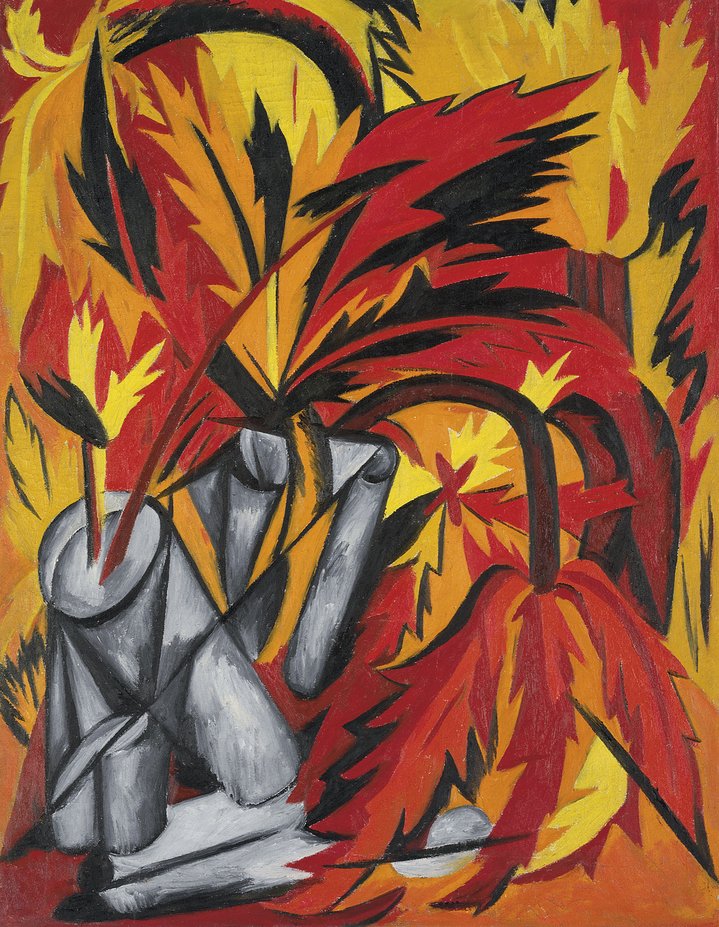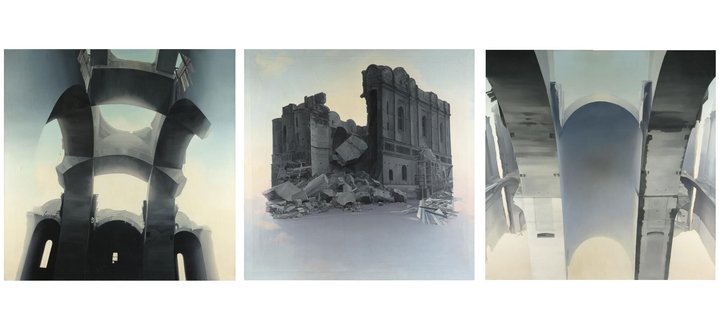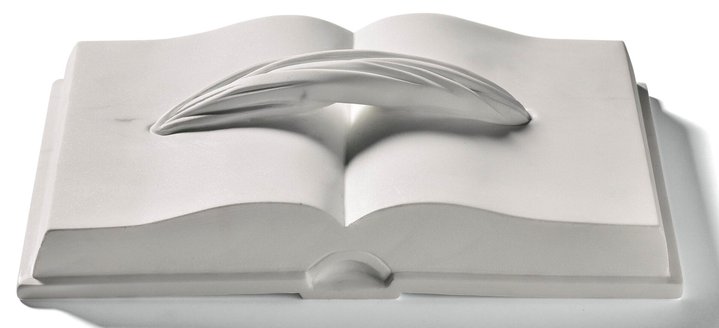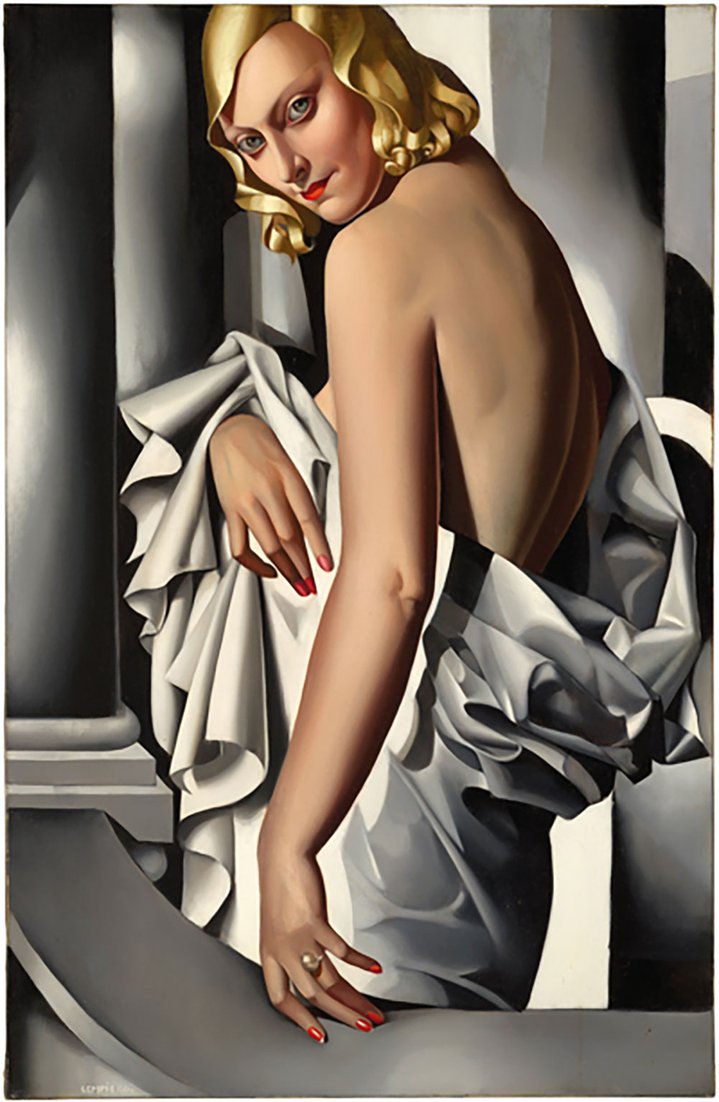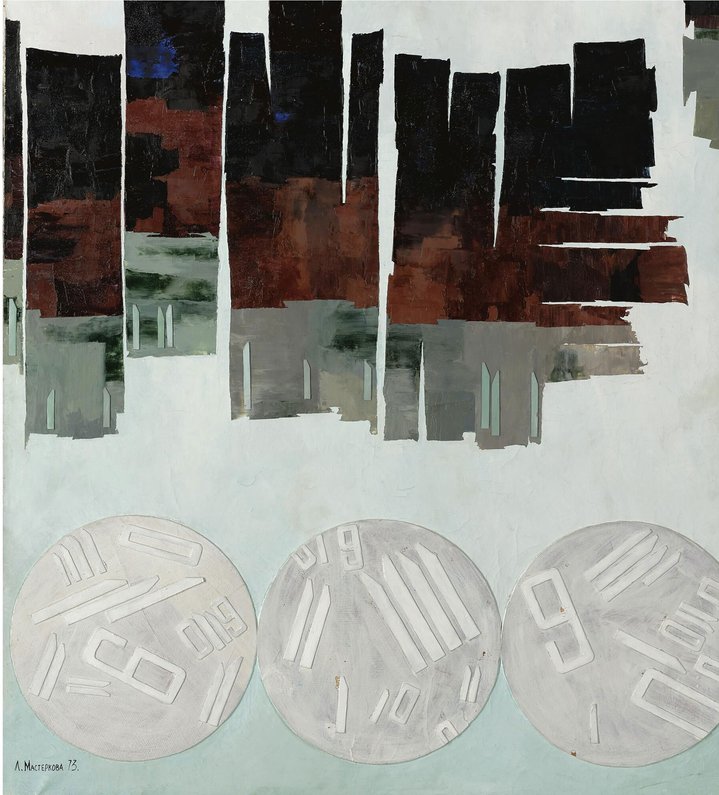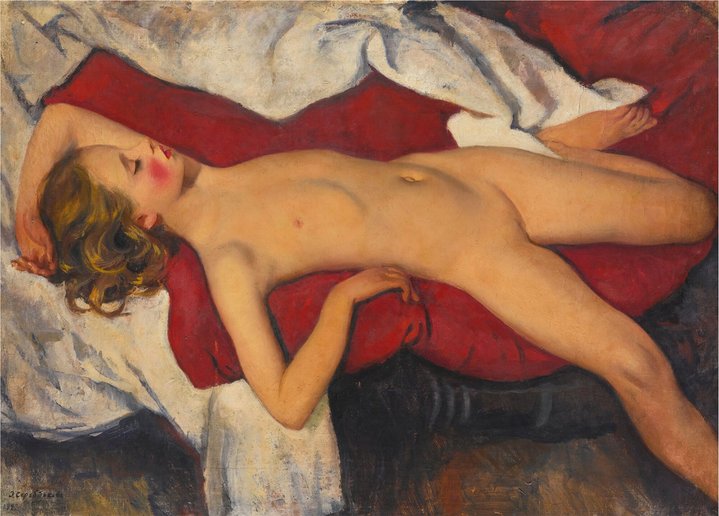Olga Chernysheva La Pastorale, 2019 Oil on canvasboard. 75x150 cm. Courtesy MacDougall's
Waiting for a miracle
Shocked by the disparity of prices for works by male and female contemporary artists on the international market? Be prepared for a new blow. When it comes to Russian contemporary artists, the gap is even wider!
Despite all the talk in the West over the past decade about balancing out the gender divide in the art world, there were many heated debates last year following a report by artnet which found that only 2% of global auction sales were by female artists. Works by female Russian artists generally perform well at auction, yet they still account for a small portion of lots. Perhaps not without a sense of disbelief, it is still possible to attend a Russian art auction today, in which there is not one single work by a female artist on offer. This sorry state of affairs represents a blow to the self-esteem of any female Russian artist today, so is there any hope at all?
Surveying the numbers of female artists offered in the main London auction houses from 2018–2020, there is an average inclusion rate of 7.8% per sale. This falls significantly when looking at the collective value of sold lots as a percentage of the sales’ totals, as in the artnet study. However, analysis has shown that the average sell through rate - which means sold lots versus unsold lots – is 72.1%. So, although works by female artists are of comparatively low value, they do perform well and can be considered solid sellers, if priced correctly. Among the staple London auction houses, both Christie’s and Bonhams have the best inclusion rates for female artists - around 10% – which does not take into account the online sales in 2020 at Christie’s. There, over $1 million of Russian art by female artists was sold last year, making Christie’s the clear winner when it comes to offering work by women.
The majority of female artists offered for sale in the London auctions are modernist and avant-garde painters from the early 20th century. This is unsurprising, as women’s historical contribution to Russian avant-garde is well known. However, how do their prices compare with those of equivalent male artists? Here, there is some reason for optimism. Last year saw a new world record for the sale of a 20th century female Russian artist. Tamara de Lempicka (1898–1980) is sold mainly in international auctions and many consider her to be Polish. However, despite the myth the artist herself created about her origins, she was, in fact, born and raised in Moscow and spent much of her formative years in Russia, which, according to her biographer, contributed to her artistic development. Her stylish portrait of Marjorie Ferry, which captures the seductive glamour of the Jazz age fetched a record-breaking $21.2 million. Although, this figure pales in significance when compared with Kazimir Malevich’s (1879–1935) 1916 ‘Suprematist Composition’, which sold for four times as much just two years earlier, the market for her artwork has grown increasingly more buoyant. Works coming back to auction once sold only a decade ago, such as the ‘Ferry’ portrait, are outstripping their old prices severalfold.
De Lempicka had already seized the baton a year ago from Natalia Goncharova (1881–1962), who had held the record as most expensive Russian female artist since the 2008 sale of her futurist composition ‘Les Fleurs’ at Christie’s. This auction record of $10.9 million still outstrips not only those of her fellow founder members of the Jack of Diamonds group (with the exception of Malevich), but also her life partner Mikhail Larionov (1881–1964), whose name, until recent decades, always had more resonance. Although, there have since been several masterpieces sold on the private market, including works by Larionov and Robert Falk (1886–1958), which have exceeded the $10 million mark, it is the auction market with open results which helps to shape public opinion.
Behind these two top female artists in third place, although at some distance, is figurative painter Zinaida Serebriakova (1884–1967), doyenne of pre-revolutionary St. Petersburg. Despite enduring decades of poverty in exile, she finally found fame towards the end of her life and a major retrospective was held in Moscow, St Petersburg and Kiev a year before she passed away in 1967. Closely identified with the World of Art group, as a member of its second incarnation, her auction record of $5.9 million does not quite come close to that of her contemporary Valentin Serov’s (1865–1911) fin-de-siecle portrait of Maria Zetlin, which stunned everyone when it sold for $14.5 million, nearly ten times the low pre-sale estimate.
Among the top ten female Russian artists, there are several others who, like Goncharova, were part of a couple where their married life-partner was an artist. Where once subconscious bias may have relegated these artists to their husbands’ shadows, today we speak more of artist power couples, where both artists enjoy notoriety and have strong market presence. Tate Modern recently staged a solo exhibition of Sonya Delaunay (1885–1979), drawing attention for the first time to the breadth of her art practice - and although her price record of $4.3 million for Marche au Minho falls slightly short of that of her husband Robert Delaunay’s (1885–1941) $5.9 million record for ‘Tour Eiffel’, established in 2012, it is still impressive. Indeed, in the fickle world of art auction records positions can change quickly: Varvara Stepanova (1894–1958) was ahead of her partner Alexander Rodchenko (1891–1956) until his ‘Construction No. 95’ came onto the market in 2016 and in one strike of the gavel he overtook her.
If these considerations seem more sport than science, the important point to make is that there is some competition on an even keel between male and female artists, which sways from one side to the other, like a boat on the sea. But what of contemporary female artists? The disparity here between the top price for a work by a contemporary or living Russian artist – Ilya Kabakov’s (b.1933) ‘1982 Beetle’ - and the top price for a contemporary, living artist at auction, which is currently held by figurative painter Natalia Nesterova (b.1944), whose works enjoyed particular popularity a decade ago, is staggering. In fact, as an exercise, if you add up the record results for the five top contemporary female Russian artists at auction - Natalia Nesterova, Lydia Masterkova (1927–2008), Svetlana Kopystianskaya (b.1950), Irina Nakhova, (b.1955) and Tatiana Nazarenko (b.1944) - their records combined barely manage to scrape together one tenth of Kabakov’s Beetle.
It leads one to conclude, that although the youngest of these artists is already in her mid 60s (and Masterkova passed away already over a decade ago), the boat has not even set sail yet for these artists. For those female artists in their 40s and 50s with established careers, such as Aidan Salakhova (b. 1964) and Olga Chernysheva (b. 1962), there can be little hope to ever reach a six figure sum at auction in the near future and, yet, these are among Russia’s greatest talent of our times. Although the above artists have all been offered for sale on the London auction market in mixed Russian sales and at dedicated Russian contemporary art auctions, such as Sotheby’s Escape Artists online sales and at MacDougalls, these latter sales have among the lowest inclusion rates for female artists among all auctions in the Russian field.
Is the situation in Moscow any different? Until last year, in the Evening and Day sales at Vladey from 2018–2020, only 5.98% of works offered for sale were by women. However, 2020 was no ordinary year and the sudden arrival of the global pandemic brought several changes to the way art is sold. A catalyst for the near complete digitisation of the art market, it has improved the situation for young female artists in a way that we have not seen before and is reason for optimism in what is essentially still a gloomy picture. Vladey’s weekly online auction - the ‘Quarantine’ series - last year brought many new names to the auction block and importantly they offered far more works by female artists for the first time, more than tripling the inclusion rate when compared with their classic auction sales.
It is a curve ball, however, which has proven to be a real driver, or perhaps indication of some change, in the Russian art world for female artists. This is not surprising, as change often comes from places we do not normally expect, places which have not been atrophied by our collective perceptions. The new art initiative ‘The Ball and The Cross’ mushroomed throughout the first lockdown into a huge trading place on Facebook, which captured the zeitgeist. According to its founder Maxim Bokser, membership of ‘The Ball and Cross’ is resoundingly female: over 70% of the participants, including artists, collectors and observers are women. He explains that among the biggest collectors on his site, those buying over 500 works, the split between male and female collectors is around 50/50. However, when looking at the medium level of collectors acquiring, say, over 50 works on the site, the collectors are 80% female. In terms of percentages of art offered by male and female artists, he commented that during the first quarantine period “we sold approximately 50/50, there was a complete balance between female and male artists”.
It is heartening that there seem to be some signs of change, however small and unexpected. If more new initiatives and ways of promoting work by younger, emerging female artists can be encouraged and the avant-gardists of the 20th century continue to punch their weight courted by Russia’s mega collectors, it the forgotten generations sandwiched in the middle who will need the most support. It is these artists who, perhaps, in turn can offer collectors today some of the biggest opportunities.






